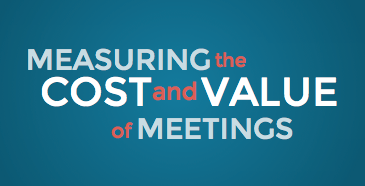Technology That Makes Meetings Effective

Let’s start with a brief history . . .
Dawn of Time: Cavemen gather to plan their hunts. Details are painted on walls of caves. Best practices are non-existent, but the species survives.
1560s: Sir Thomas Smyth begins writing down the accepted practices for meetings in England’s House of Commons. “Parliamentary procedures” are now codified, and best practices become set in stone (or really thick books).
1876: U.S. Army Major Henry M. Robert publishes a book entitled Pocket Manual of Rules of Order for Deliberative Assemblies, which is wisely shortened to Robert’s Rules of Order (now in its 11th edition). Robert’s approach follows parliamentary procedures, with some modernization in newer editions.
The past 50 years: A growing collection of books attempt to define a less rigid approach for business meetings, while providing guidance on best practices.
The past 10 years: Thousands of blog posts every year on how to have better meetings — or how to avoid them. There are common themes about best practices, but clearly the message isn’t getting through, because each year brings thousands of new blog posts.
So for all this effort to define best practices, why are we still scrambling? Two reasons:
- Very few people have been trained on how to prepare for and run effective meetings. Instead, approaches to meetings are passed down, from one generation of workers to the next, with barely a thought toward what really are the best practices.
- We’re all so busy working — and being in meetings — that improving how we approach meetings tends to be a “nice to have”, not a “need to have” (until you’re in a meeting that is failing). And while there might be good intentions of learning from a book or a flood of blog posts, trying to actually implement the ideas can be challenging.
To the Rescue . . . Meeting-specific software.
Not web-conferencing software, but apps expressly designed to improve your processes before, during, and after meetings. These programs make it much easier to apply best practices to all your meetings, without necessarily having to read a book or a raft of blog posts. You just open the app, follow the prompts or options, and you’re on your way to better meetings.
Of course, software can’t completely eliminate some major failings in meetings — things like going off topic, running long, people arriving late, and such. But the best of the breed prompt you to enter a specific objective or goal for your meeting (which is the single best thing you can do to improve your efforts).
And some even give you a structured template for different types of meetings (like Brainstorming, Problem Solving, and Weekly Updates). You can still get value out of the books and blog posts, but meeting-specific software handles a lot of that for you already.
The past five years has seen a dramatic increase in the number of apps for meetings and their capabilities. There are offerings for almost every taste, from simple agenda-builders to ones that support classic parliamentary approaches.
Meeting-specific apps are not the only tools you can use, of course. A lot of people rely on Google Docs or Evernote or other blank-slate software, and then just pour their ideas, notes, and decisions into those. Some people are even using apps like Slack to share input.
While those tools are handy, they make it easy to miss or skip the best practices that can transform your meetings. And the lack of structure actually makes the meeting more likely to go astray. Meetings-specific tools help to keep you focused and on-track.
Lucid Meetings recently published a very interesting study on the number, effectiveness, and cost of meetings in the U.S. One of the most intriguing findings was that, for all the wailing about how bad meetings are, only 15% of people surveyed really hated meetings. The other 85% of responses ranged from “good-to-excellent” to “neither good nor bad.”
Does that mean that people are actually okay with meetings and nothing needs to change? Call us partial, but we’d say “No” (as will all those thousands of writers queuing up the next wave of blog posts on effective meetings).
Rather than suggest that 85% of people don’t need help with meetings, we’d like to suggest that 85% are getting by with what they have, unaware that there’s a better way to do things.
Before calculators came along, people were mostly content doing calculations on paper. Before spreadsheet programs came along, people were mostly content with doing calculations on their fancy calculators. Why? Because they didn’t know other ways might exist, and, often, “because that’s the way we’ve always done it.”
But you don’t have to stick with the old approaches of handling meetings. There are better ways, they’re easy to learn, and the value you and your team will get from them far exceeds the costs. Best practices are baked into the software, and that’s a very good thing in these busy times.
Here are several options to get you started:
Simple meeting productivity
(for people just getting started with better meetings)
- Do.com
- Work Life
- Solid
- Minutes.io
For Professionals
Business Platforms
- Meeting Booster
- Meeting Sense
- Lucid Meetings



